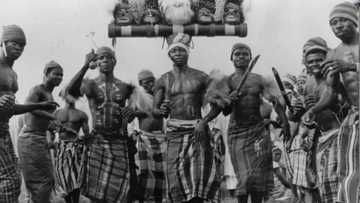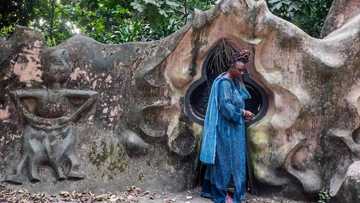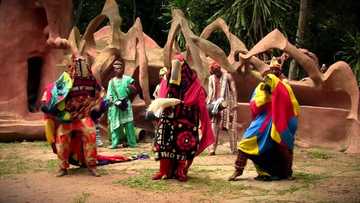History of Igbo-Ukwu art
The Igbo-Ukwu bronzes are so mysterious and seem to have such a long, unrevealed history. Nigerian scientists believe that the ancestors used it during the burial ceremony of highly important people. One has to wonder why the tradition of bronze casting was so strong at that time and why blacksmiths worked only on the Igbo-Ukwu at? Let’s find out more about the most enigmatic secrets from the history of Igbo-Ukwu art.
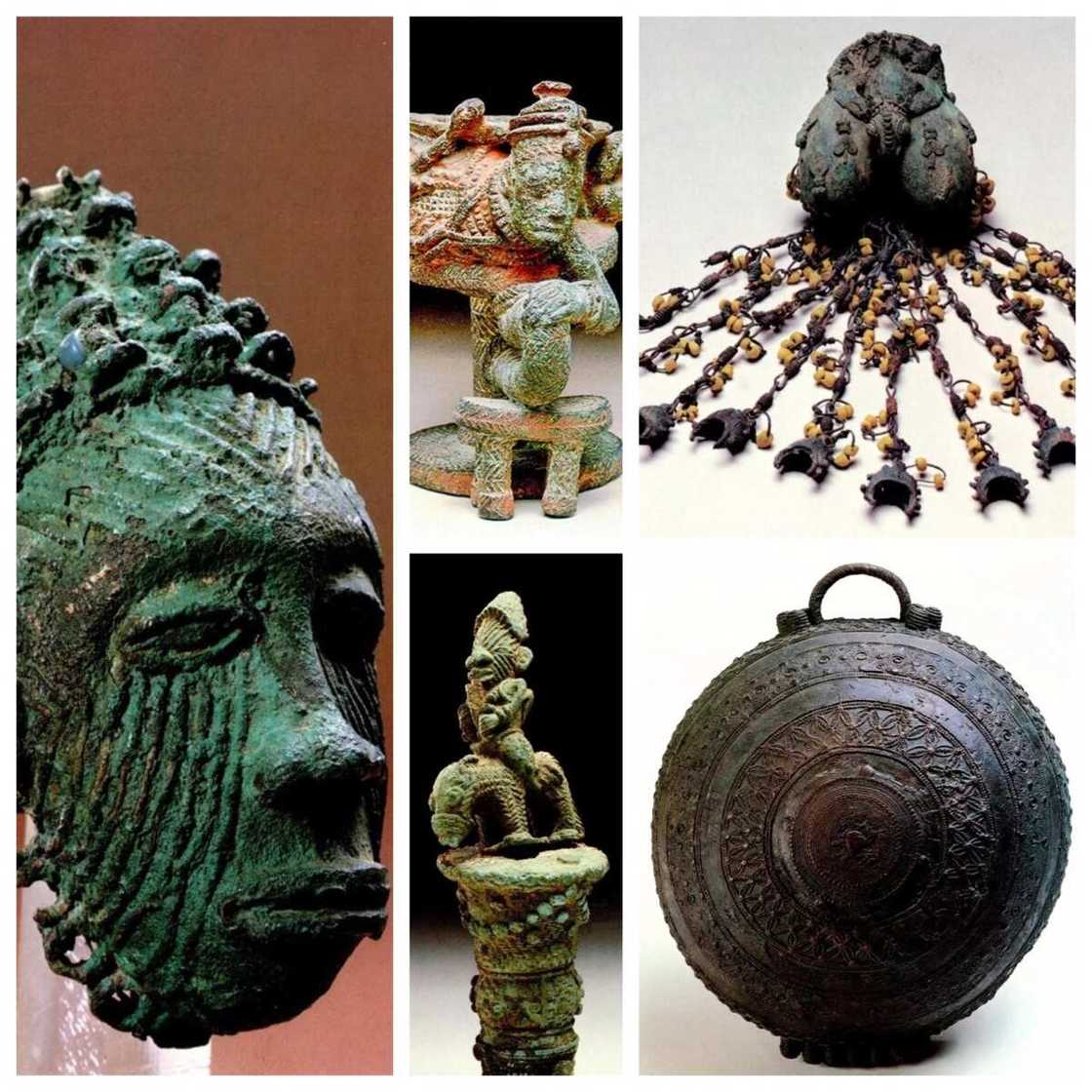
Nigerian Igbo-Ukwu art
The bronze sculpture of West Africa is the evidence of a highly developed, magnificent artistic tradition in this part of the continent. This technically innovative and gorgeously polished form of bronze is art historians and anthropologists’ most favorite discursive topic.
The earliest examples of cast bronze artifacts were found in Igbo-Ukwu, Nigeria, in the 9th century. In West Africa, the tradition of bronze casting reached its peak during the Great kingdoms periods. The hardest cire perdue technique was used for the creation of different items made of bronze. The lost-wax casting technique is the process of duplicating metal sculpture ( silver, bronze or gold) from an original one.
Bronze casters organized some special formations and held a key position in the society. At that time, only a king was able to demand the production of bronze items and control the distribution of metal relics. The most popular bronze artifact was calabash bowl. It was commonly decorated with pyroengraved designs.
READ ALSO: Nigerian traditional art and culture
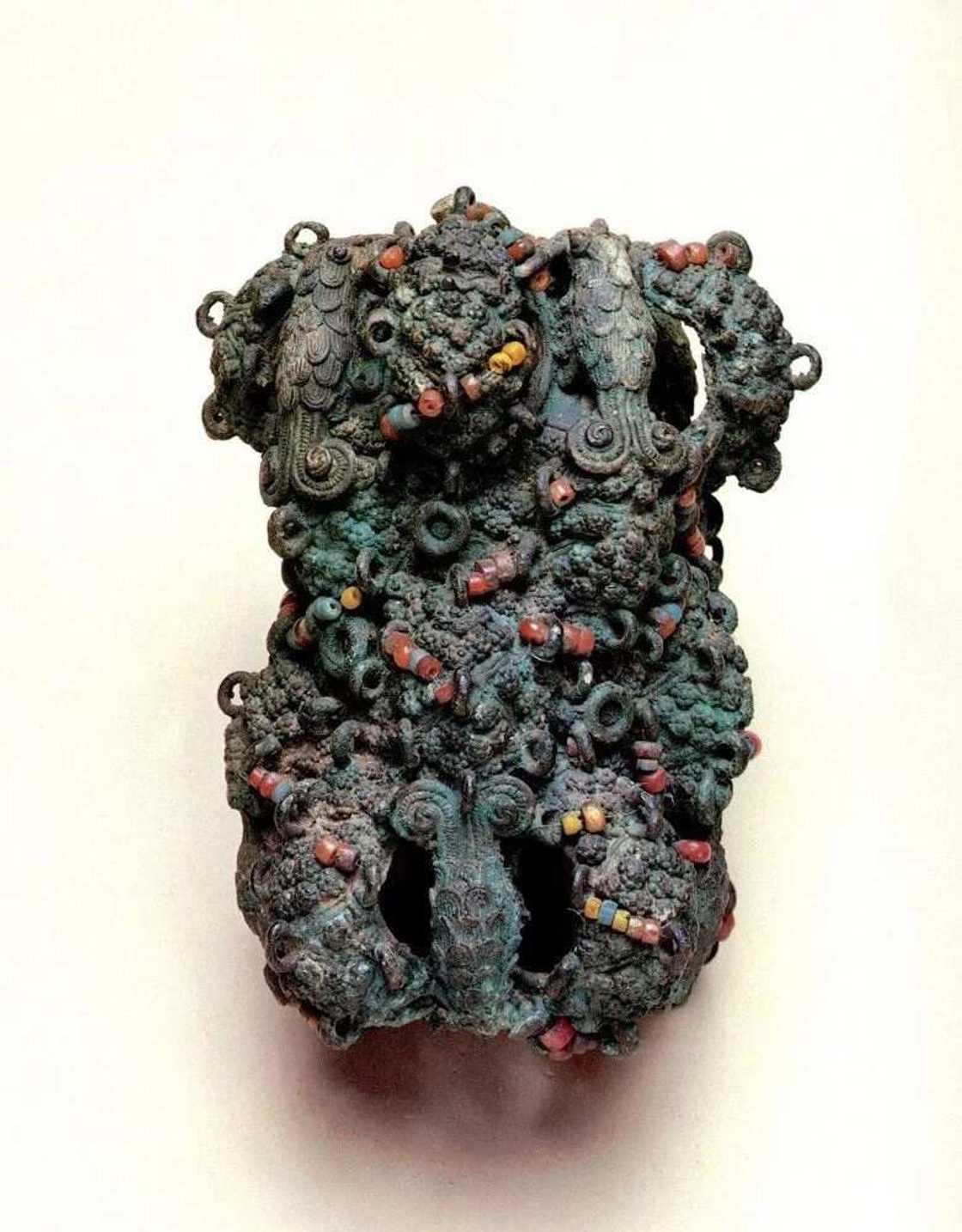
The Igbo-Ukwu town art
The Nigerian town Igbo-Ukwu is famous for its archaeological sites, where for the first time, bronze artifacts were found. The discovered items are examples of Nigerian refined bronze art. Igbo-Ukwu is located near the well-known modern town of Onitsha, which is in the southeast of Nigeria. Igbo-Ukwu is situated in Aguata Local Government Area, Anambra State. The town has a historical and cultural significance for Igbo and Nigerians as a whole. In the past, Igbo-Ukwu was part of the Nri Kingdom, (the 10th century AD).
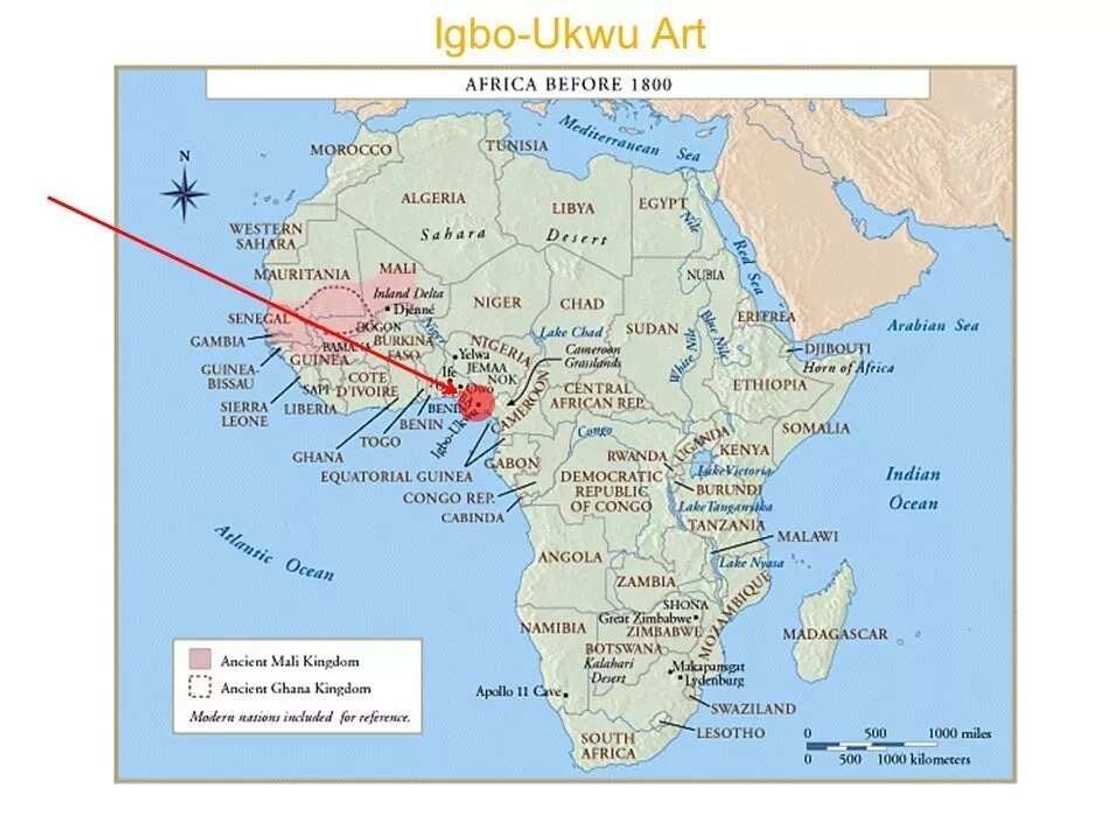
The prominent Igbo-Ukwu archaeological site has different parts, including the main burial place with caches and shrines. Archaeological experts discovered the site in 1939 when an Igbo farmer named Isaiah Anozie accidentally stumble upon several bronze objects. He was digging the soil to hold water in the dry seasons and never thought he could find something so precious in his yard. In 1959, archaeologist Alice Apley started to study more about local Igbo-Ukwu population and their culture.
She talks a bit about the art of the locals, saying:" The inhabitants of Igbo-Ukwu had a metalworking art that flourished as early as the ninth century. Three sites have been excavated, revealing hundreds of ritual vessels and regalia castings of bronze or leaded bronze that are among the most inventive and technically accomplished bronzes ever made.
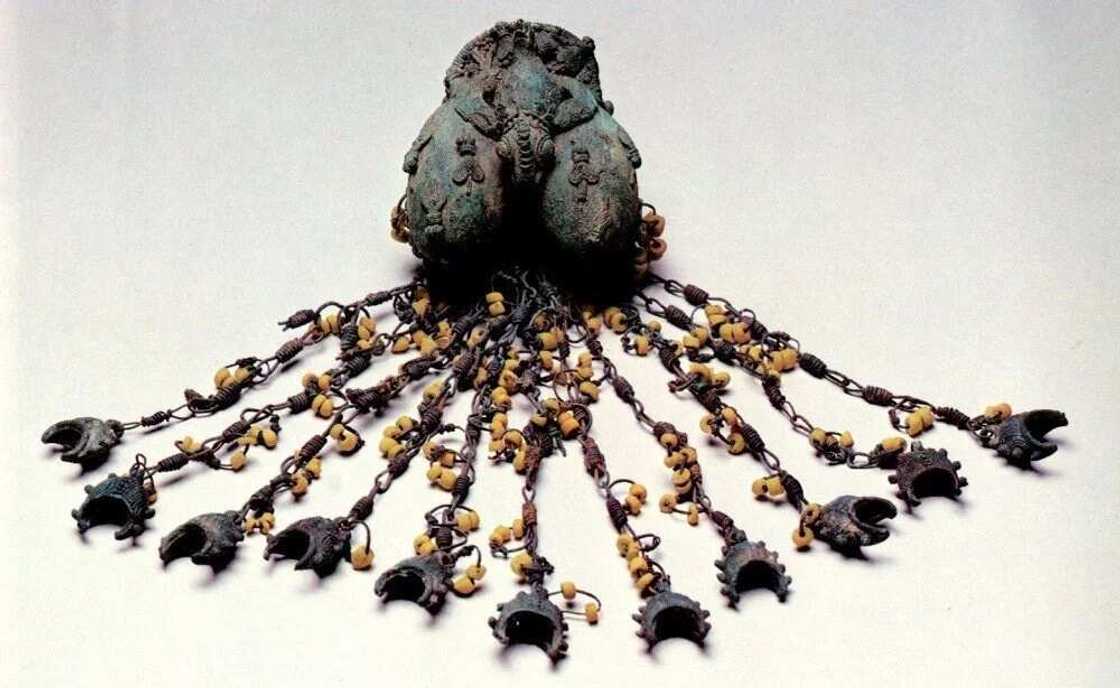
Alice Apley also stated that Igbo-Ukwu people were the earliest coppersmiths in West Africa. They started to work with metal by bending, twisting and incising it. They are considered to be the earliest groups of West Africans who used casting techniques to produce bronze sculptures. Although they were not familiar with soldering, riveting and raising metal techniques, they managed to make fine bronze items.
6 Top interesting facts about Igbo-Ukwu bronze art
- Almost all of Igbo Ukwu bronze art objects were made around the 9th century AD. Usually, Igbo-Ukwu art is represented with the traditional ceremonial vessel. There are also a lot of extravagant bronze vases and bowls. The numerous ornaments and lost wax technique are really impressive.
- Igbo Ukwu art bronze is considered to be the earliest type of art in sub-Sahara region.
- The bronze items were mass-produced locally but the Nri Kingdom was involved in a long-distance and cross African trade, which means that Igbo-Ukwu art could be sold to any other country in sub-Sahara region.
- The three sites of Igbo-Ukwu art were discovered during 1938-1959 years. The discoveries include Igbo Richard (a burial chamber), Igbo Isaiah (a shrine), and Igbo Jonah (a cache).
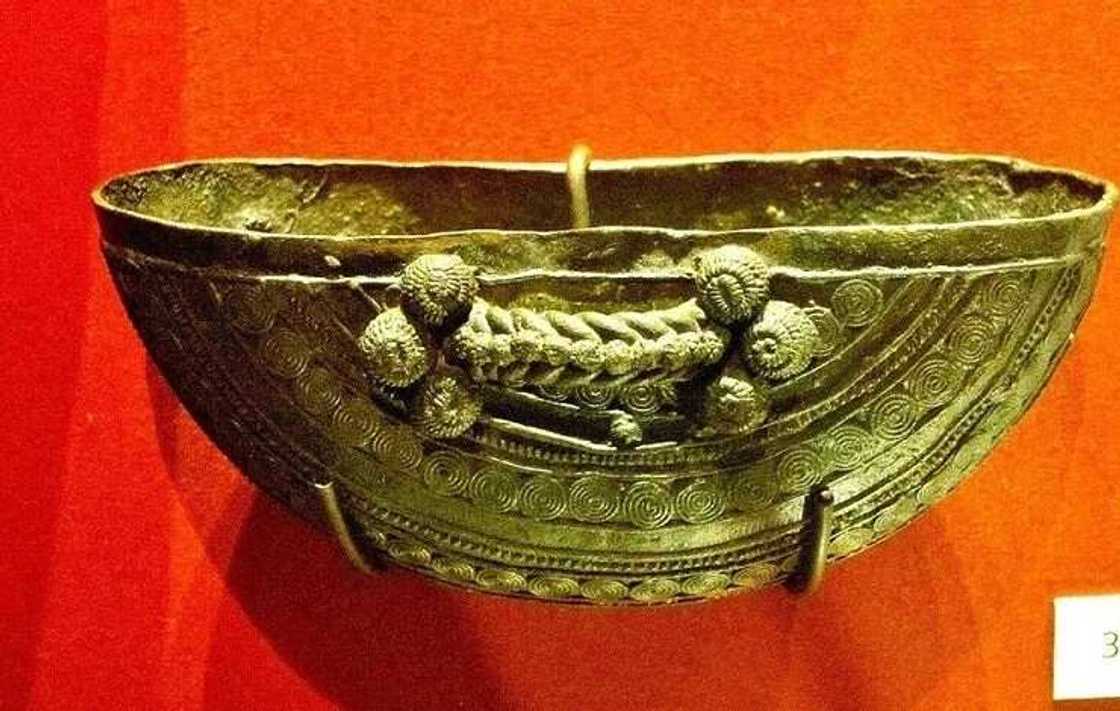
- The discovered Igbo-Ukwu bronze artifacts are believed to be the remnants from the burial. The imets found include crowns, breastplates, ritual vessels, pendants, jewelry, ceramics, copper, iron objects and thousands of glass beads.
- The Igbo-Ukwu bronze castings are made in different stages, using the lost wax technique. This is the direct proof of Igbo ancestors’ high bronze casting skills.
The Igbo-Ukwu art examples
There are three basic Igbo-Ukwu artifacts known as the key ones: vessels, masks, and sculptures.
The Igbo-Ukwu vessels
The Igbo Ukwu vessels usually have some insects ornament on them and a mix of parallel lines. Perhaps the insects reflect the importance of controlling the creatures in the area where yam crop is grown.
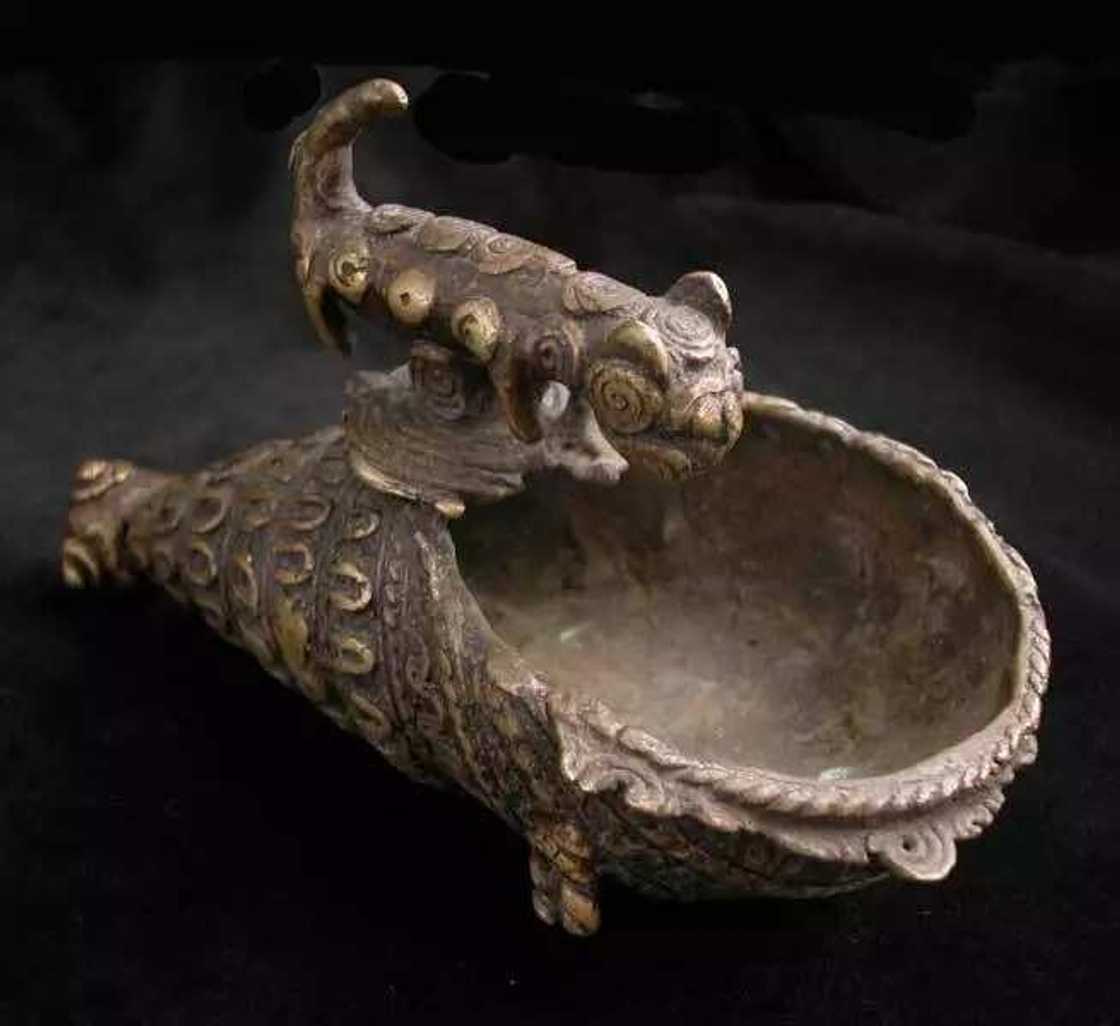
Most of the vessels are decorated with animal pictures or symmetric circles. Some parts of such vessels are made in the shape of a particular animal. In the picture below you can see the traditional Igbo-Ukwu shell with leopard standing upon a pedestal. The decoration consists of concentric circles and herringbone ornamentation.
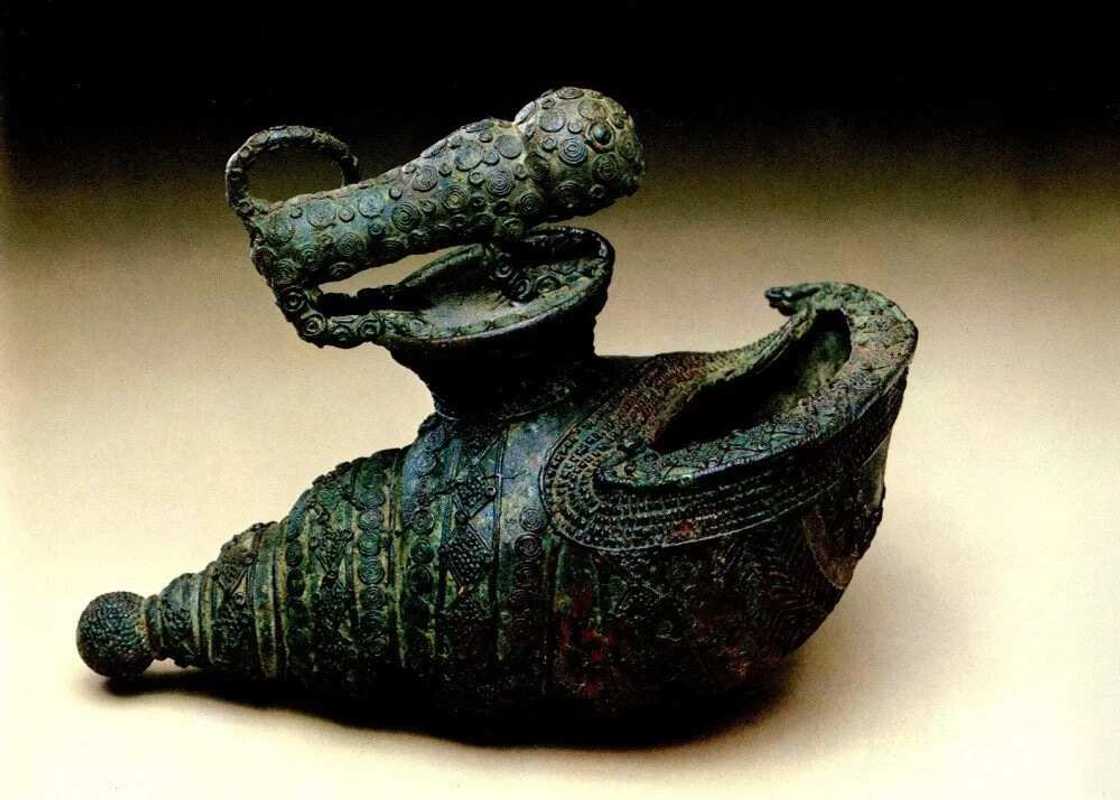
The Igbo-Ukwu sculpture
The traditional sculpture consists of the portraits of important people and military generals. Most of the sculptures were produced to express the respect to elites.
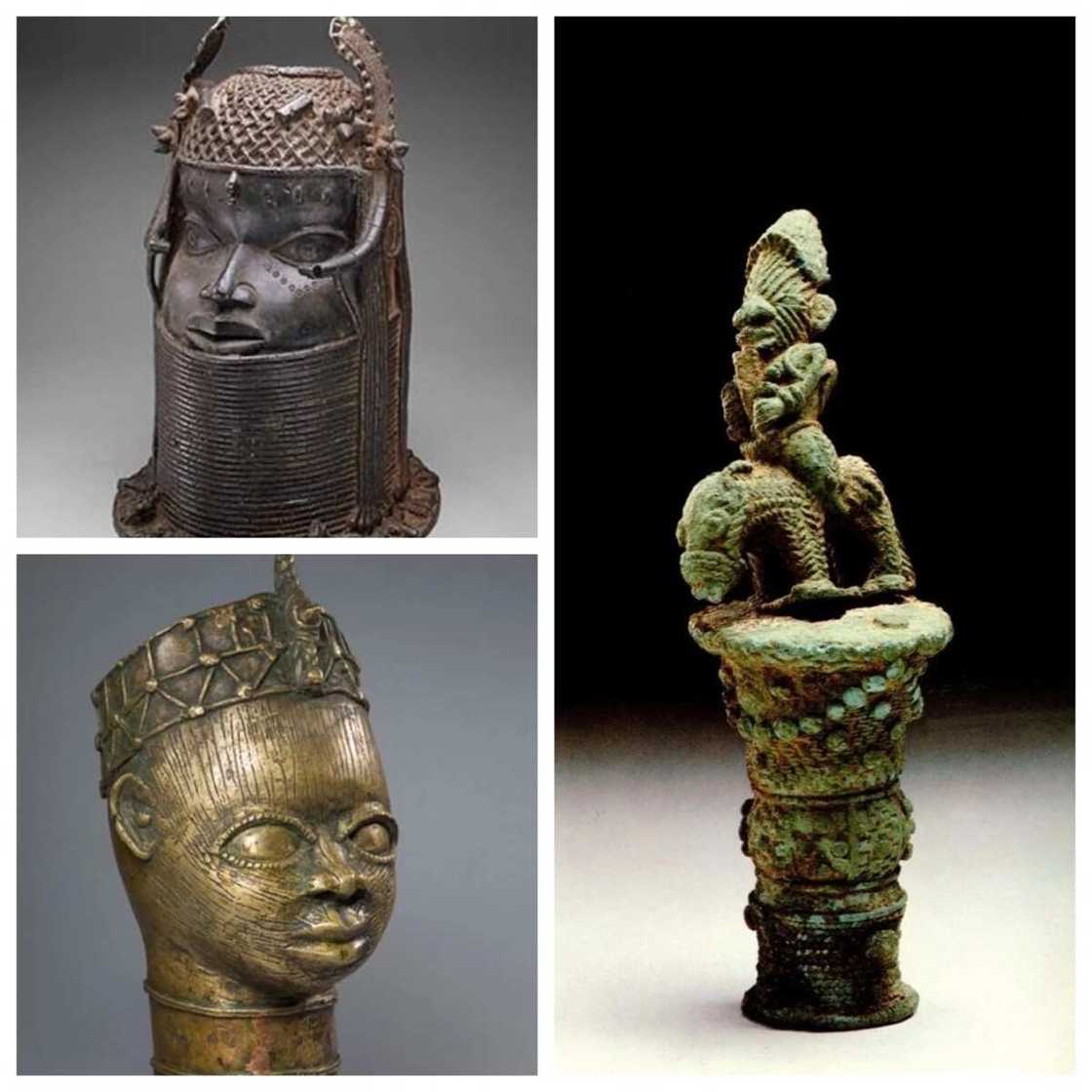
The Igbo-Ukwu masks
Aside from traditional bronze Igbo-Ukwu vessels and sculptures, the Igbo people are known for making various types of bronze masks, Mbari houses, and mud sculptures.
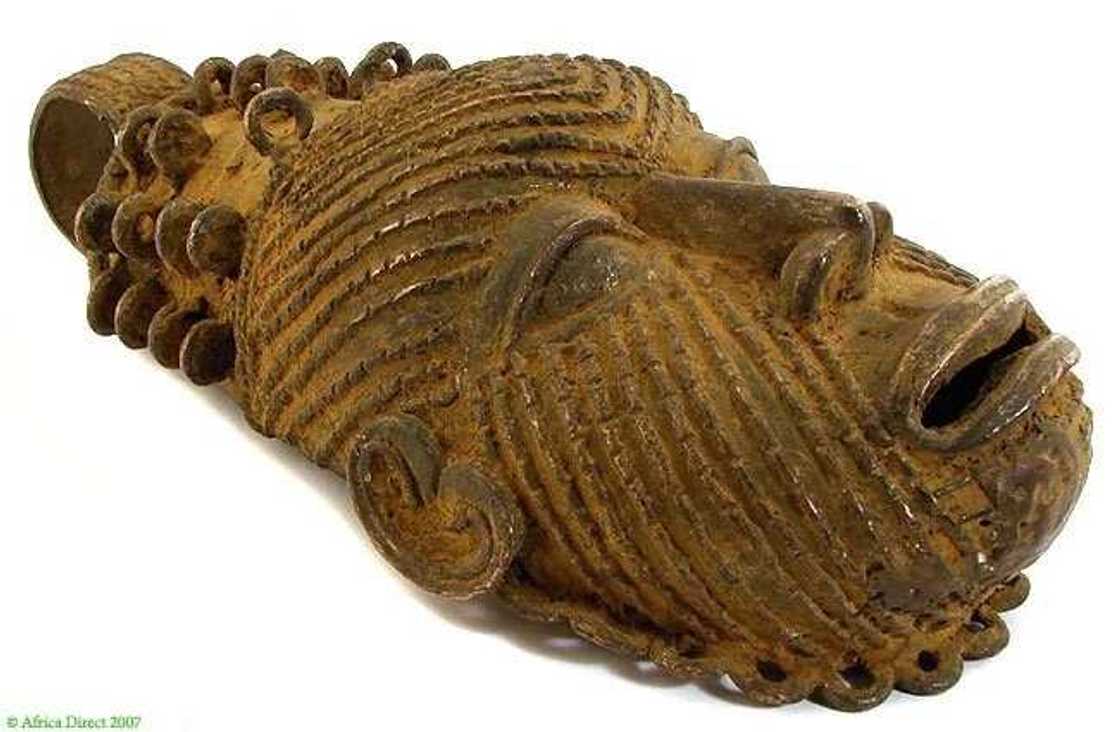
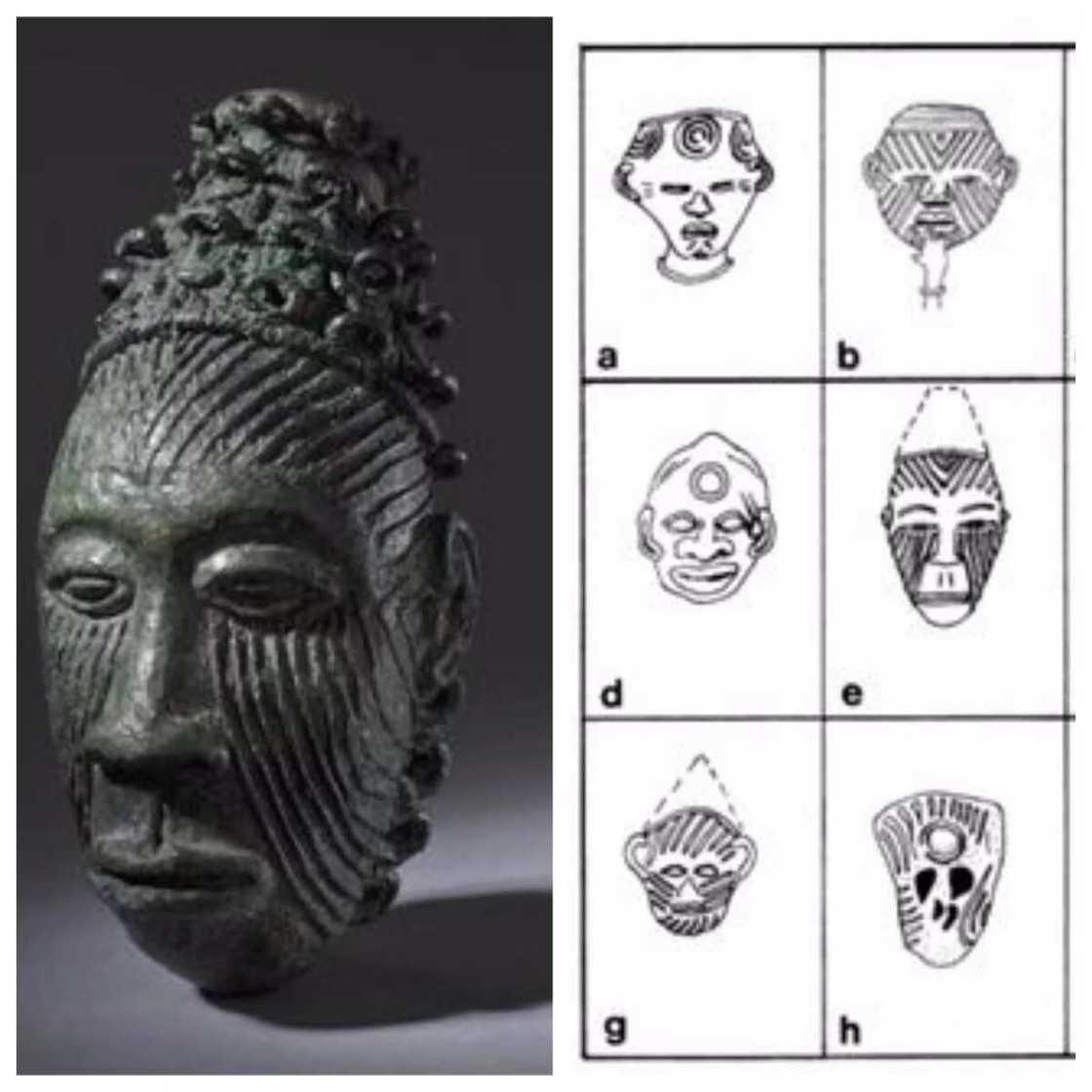
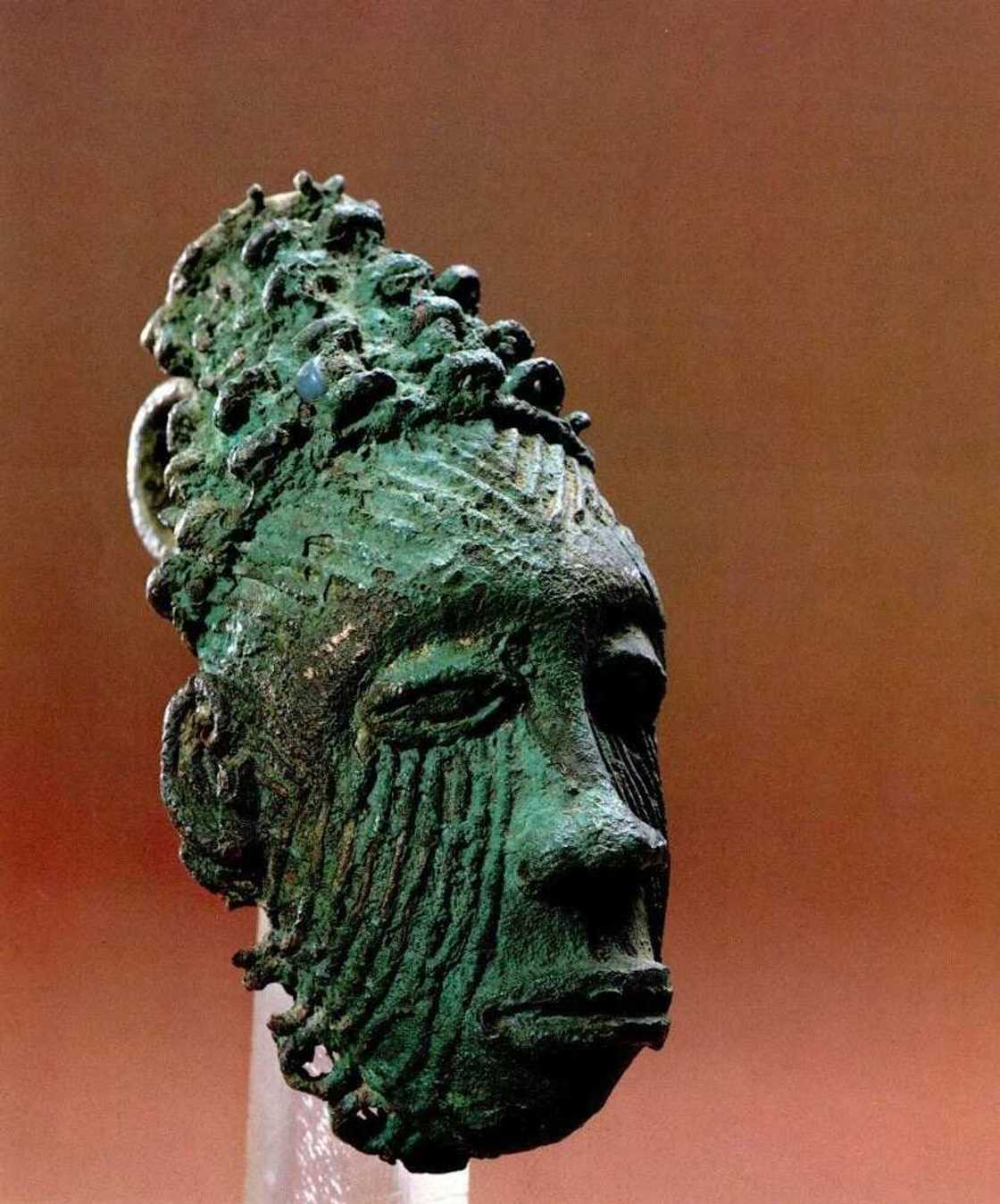
The most sophisticated and precious art of Nigeria is Igbo-Ukwu bronze art. It is undoubtedly the earliest type of art in Nigeria and the first one to set on trade. Looking at all these interesting ornaments and patterns makes you wonder at how a person can express is/her own perception of the world in art. The bronze seems to be perfect material at all times.
READ ALSO: Igbo cultural dance attire
Source: Legit.ng


